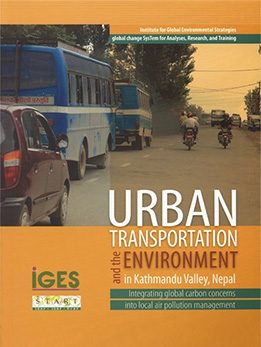This study presents analyses of the current status of the emission of air pollutants and carbon dioxide (CO2) and the energy use in the Kathmandu Valley which is associated with urban passenger transportation. It also includes a discussion of past trends and future scenarios in order to help identify plausible synergistic mitigation measures. In this pursuit, the study developed an inventory of priority air pollutants, energy use and CO2 emission associated with passenger transportation in the Kathmandu Valley for the past and projected these values into the future with the help of a bottom-up dynamic accounting model and a scenario approach. In the process, a policy dialogue was held with relevant stakeholders in the Valley to identify issues of local priority (which were identified as PM10 emissions, congestion and energy use), past achievements, and the potential present and future avenues for policy interventions in the Valley. Using the outcomes of this dialogue, available data, and an accounting model, a number of scenarios were then evaluated using a few indicators that are relevant to the local context (chnges in PM10 emissions, number of vehicles, and conservation of energy and utilisation of indigenous energy resources) and the global context (mitigation of CO2 emissions). This study was sponsored by START under the auspices of the Advanced Institute on Urbanisation, Emission and Global Carbon Cycle.
Urban Transportation and the Environment in Kathmandu Valley, Nepal



